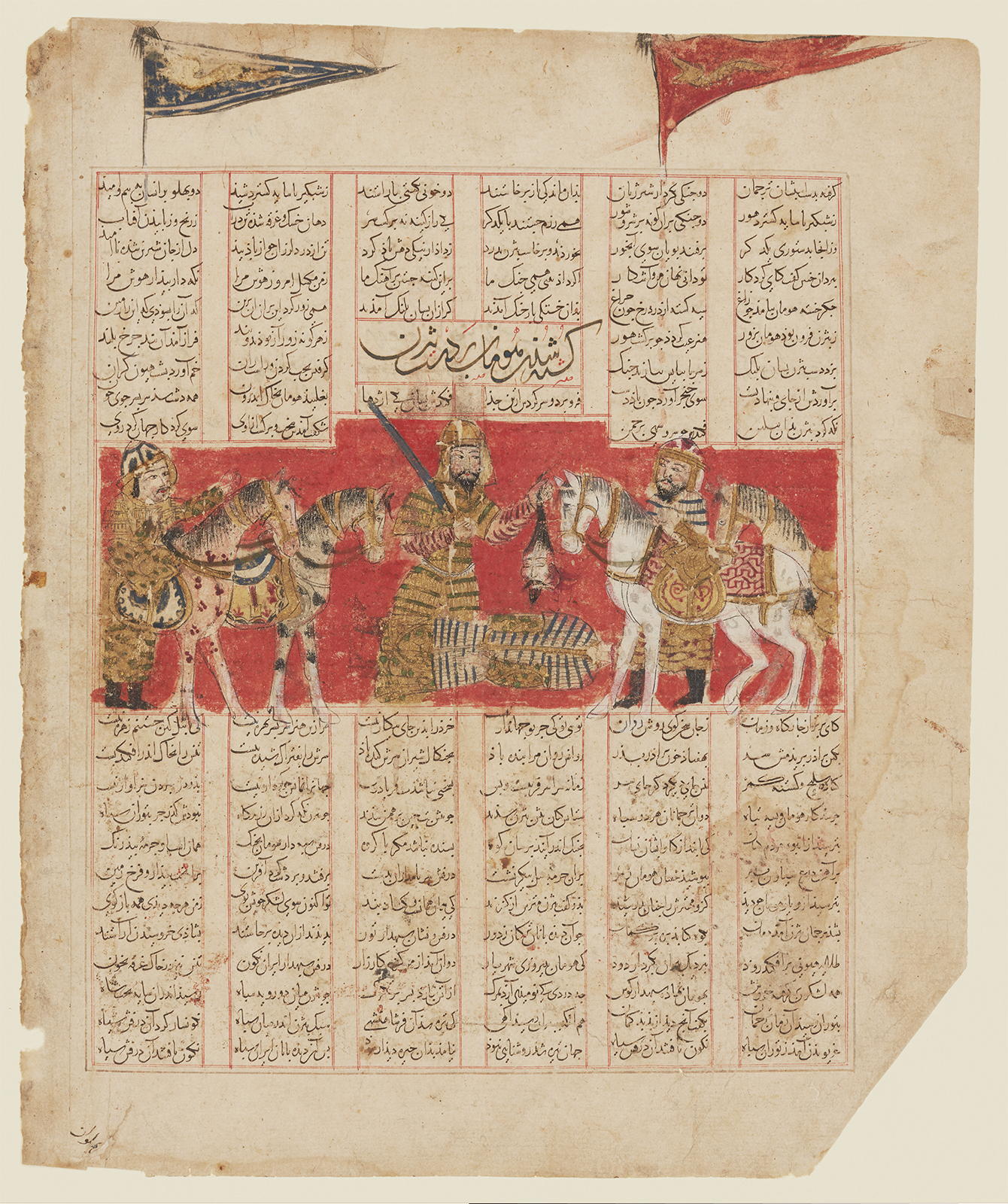Click on the image to zoom
Bizhan decapitates Human
Folio from a dispersed copy of Firdausi’s Shahnameh (Book of Kings)
- Accession Number:AKM33
- Place:Iran, Shiraz
- Dimensions:36.9 cm
- Date:741 AH / 1341
- Materials and Technique:Ink, coloured pigments and gold on paper
Iran’s long war with Turan (Central Asia), launched by King Kay Khusrau to avenge the murder of his father Siyavush, provides the backdrop to this gruesome scene in AKM33 (folio 131 verso), in the 1341 version of Firdausi’s epic poem, the Shahnameh (Book of Kings). Earlier in the Iran-Turan conflict, Human fought to a stalemate with Tus, a seasoned commander of the Iranian army (see AKM32). Human then challenged Gudarz, a senior Iranian commander, and the two traded insults and taunts. Bizhan, the grandson of Gudarz, resolved to take up the fight. He implored both Gudarz and his father Giv for the armour that once belonged to Siyavush. They eventually relented, and Bizhan set forth mounted on his favourite steed and accompanied by an interpreter able to speak Turkman, the Turanians’ native tongue.
Further Reading
This illustration represents the bloody end to the combat between the youthful Bizhan and the fierce Turanian fighter Human. The heading above the illustration tells us the precise scene: “Human is slain by Bizhan’s hand.” Human’s body lies prone on the ground, while Bizhan stands above holding his enemy’s head, its crimson trail rendered in a shade slightly darker than that used in the background. Bizhan seems to have dispatched his foe with a sword, not the dagger that is specified in Firdausi’s poem. The sword now looks black, but it is likely oxidized silver. The black beards of Bizhan, Human, and another warrior standing on the right—in addition to the moustache and the hair locks of the warrior at the left—were either added or enhanced in a “refurbishment” of the 1341 manuscript. Such changes may have been made when the folios came onto the art market in the early 20th century.
Firdausi describes the battle between Bizhan and Human in vivid detail. After some name-calling and debate, the warriors choose a deserted spot to fight. Girding for the fray, they go after each other with every imaginable weapon—bow and arrows, spears, swords and shields, and maces—without either man gaining the upper hand. In desperation, they dismount and wrestle in two separate bouts. Finally, Bizhan is able to grasp Human by the neck, hold him down, and cut off his head with a dagger. After thanking God for this victory, Bizhan straps Human’s severed head onto his horse’s saddle and rides back in triumph to the Iranian forces.
— Marianna Shreve Simpson
Note: This online resource is reviewed and updated on an ongoing basis. We are committed to improving this information and will revise and update knowledge about this object as it becomes available.




